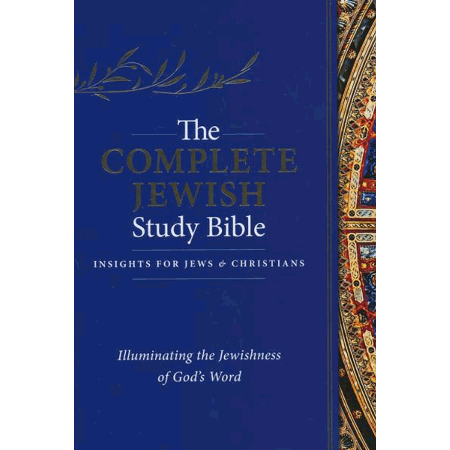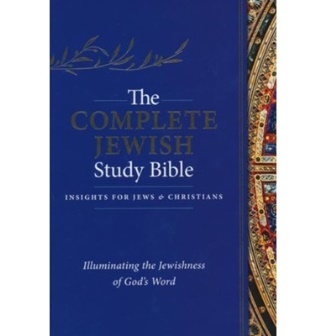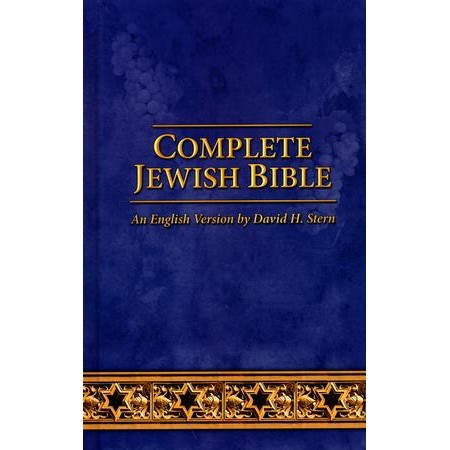This Complete Jewish Study Bible review shows how it accomplishes this purpose very well. Each book of the Bible has introductions written from a Jewish perspective. There are themed articles throughout both the Tanakh (Old Testament) and B’rit Hadashah (New Testament) that help the reader understand the historical and cultural context of the Scriptures. The articles are organized into twelve themes:
-
- Covenants
- The Torah
- Jewish Customs
- Messianic Prophecy
- The Names of God
- Anti-Jewish Scriptural Interpretations
- The Shabbat
- Salvation and Atonement
- The Holy Days of Isra’el
- Jewish-Gentile Relations
- The Land of Isra’el
- The Tabernacle (Mishkan)
In addition to the themed articles, there are more than 30 topical articles in both the Old and New Testaments. These are from a variety of authors, each with the source clearly identified so that you can pursue them further if desired. In fact, there is a short biography of all the contributors and as well as a complete list of works cited.
 The Complete Jewish Study Bible
The Complete Jewish Study Bible
General Editor: Rabbi Barry Rubin
Theological Editor: Dr. John Fischer
Hendrickson Publishers
From the Publisher:
The Complete Jewish Study Bible pairs the newly updated text of the best-selling Complete Jewish Bible with detailed notes and comprehensive study material to help both Jewish and Christian readers understand and connect with the essence of their faith—God’s redemptive plan for his people. Readers will be enriched through this Jewish reading of Scripture and the revelation of the long-awaited Messiah, Yeshua, throughout both the Tanakh (Old Testament) and the B’rit Hadashah (New Testament).
Here is a brief video from Christianbook.com describing the Complete Jewish Study Bible:
An extensive introduction – more than 40 pages – sets the stage for using the Complete Jewish Study Bible by describing its features. If you are interested in how this translation came to be, the philosophy of the translation, or the importance of the Jewish setting, Dr. Stern lays it all out. There is even a list of Messianic prophecies in the introduction, because Yeshua is what ties this Complete Jewish Bible, Old and New Testaments, together.
Torah Portions
There are many helps in the Complete Jewish Study Bible for both congregational and personal worship. At the very beginning, before the Table of Contents, is a blessing printed in both Hebrew and English (sorry, there is no transliteration) that is like the traditional Torah blessing:
ברוך אתה יהוה אלהינו מלך העולם אשר נותן תורת אמת ובשורת ישועה לעמו ישראל ולכל העמים על־ידי בנו ישוע המשיח אדוננו
Praised are you, ADONAI our God, King of the Universe, who gives the Torah of truth and the good news of salvation to his people Isra’el and to all the peoples through his son Yeshua the Messiah, our Lord.
The first five books of the Complete Jewish Study Bible are divided into the 54 traditional Portions, or Parashot, in addition to the chapter and verse markings. Each Parashah is identified by name in Hebrew and English, and at the end of each Parashah are the Haftarah and suggested B’rit Hadashah readings.
There is a complete listing of the 54 Torah Portions (Parashot) by name, with the Torah and Haftarah readings and suggested B’rit Hadashah readings – usually several. Following those are readings for the Festivals, Feasts and Fasts.
Other Helps
There are additional reference helps in the back of the Complete Jewish Study Bible, including:
-
-
- Glossary of Hebrew words (with Pronunciation) into English
- Glossary of English words into Hebrew (with Pronunciation)
- Index of Tahakh Passages Cited in the B’rit Hadashah
- Topical Articles Index
- Themed Articles Index
- Biographies of Rabbis and Sages
- Biographies of Contributors
- Works Cited for Further Reading
- And of course you always conclude a good study Bible with full color maps.
-
About the Translation
The Jewish New Testament was first published in 1989. It is a translation from Greek by one man, Dr. David H. Stern. It is a Dynamic Equivalent translation, meaning a thought-for-thought rather than a word-for-word rendition. One reason in particular for this approach is that the language of the traditional word-for-word English translations have taken on western meanings that no longer reflect the intent of the original texts. This is from the introduction to the original Jewish New Testament (referenced passage is found in Galatians 3:23):
For example, the Greek phrase upo nomon (literally “under law”) is usually rendered “under the law.” But because this phrase has become a buzzword in anti-Torah Christian theology, the Jewish New Testament and now the Complete Jewish Bible spell out the meaning of these two Greek words in thirteen English words: “in subjection to the system which results from perverting the Torah into legalism.”
The Greek text used is the United Bible Society (UBS) The Greek New Testament, 3rd Edition, 1975. This is what is known as a “critical text” assembled from the thousands Greek texts available to present what is most like the original manuscripts, now extant. Stern says he also consulted “a number of English and Hebrew versions and commentaries.”
Stern describes the Old Testament in the Complete Jewish Bible (CJB) simply as a “version.” He says it is “something between a translation and a paraphrase; since it is partly one and partly the other.” He began by paraphrasing the 1917 Jewish Publication Society Tanakh, a public domain work. As he came across JPS renderings that he questioned, he translated from the Hebrew Masoretic text himself.
Dr. Stern describes the purpose of the CJB in four parts:
- My first purpose, as I said, is to restore the unified Jewishness of the Bible, and, particularly, to show that the books of the New Covenant are Jewish through and through.
- The second aim of the Complete Jewish Bible is to express the word of God – Tanakh and B’rit Hadashah together – in enjoyable modern English. I want the Bible to be accessible and easy to read, flowing easily from the page into the mind and heart, unimpeded as much as possible by the differences between the environment of the Bible and that of the present.
- My third purpose is to make the CJB fully usable in a Messianic synagogue, where the B’rit Hadasha would be red in the service along with the Torah and the Prophets. (The CJB can be used to follow the readings in a non-Messianic synagogue as well.)
- And finally, I am supplying at last what my fans have been asking me for – a single volume containing my version of the entire Bible.
The Format of the Complete Jewish Bible
The Tanakh is ordered as would be found in the Masoretic text. Both Hebrew and English names are used, though the common English names are not always translations of the Hebrew names. The books themselves are in a different order than most Christian Bibles. Tanakh, or in Hebrew Tav-Nun-Koph, is an acronym for Torah, Neviim, Ketuvim – more commonly in English called the Law, the Prophets, and the Writings. Chapter divisions and verse numbering also frequently differs from most Christian Bibles. For more on this, read my post Book, Chapter and Verse. To aid the reader, the numbering from the Hebrew Tanakh is primary with the traditional Christian numbering shown in parentheses ().
The CJB primarily uses Hebrew names for proper nouns – people and places. A number of significant Hebrew words are also transliterated throughout the Bible. Thankfully, there are those two Glossaries in the back of the Complete Jewish Study Bible – one referencing Hebrew words to English, and one referencing English words to Hebrew.
In the case of the Divine Name yod-hey-vav-hey, usually vocalized as Yahweh, the CJB represents it as ADONAI in SMALL CAPS. Of course, the name of the Messiah is properly printed as Yeshua.
If There Is One Thing I Don’t Really Like …
… it is the fact that the Tanakh is pretty much exclusively from the Masoretic texts. I am personally not convinced that the Masoretic texts have not been revised by those who do not accept Yeshua as the promised Messiah. I find great value in the Septuagint, a Greek translation by Jewish scholars that probably comes from much older Hebrew manuscripts, of course no longer extant. It is significant that most quotations of the Old Testament in the New Testament appear to be from the Septuagint.
But I understand Dr. Stern’s reasoning. This is a Complete Jewish Bible, and Jewish Bible translations are based on the Masoretic texts. It is good to have an abundance of resources, and I use this translation along with my preferred New American Standard Bible and several others. None of them are perfect.
Conclusion and Recommendation
The CJB is an easy-to-read version from the perspective of Jewish culture and understanding. In this Complete Jewish Study Bible review we have seen how this edition of the CJB is a valuable resource for followers of Yeshua for daily reading, study and worship. The Messianic Light highly recommends this Bible.



Shalom Larry , may I ask your thoughts on the NASB ?
Thank you ,
Shoshanah
Thanks for the question. As indicated in this post, NASB is my primary translation along with the ESV, primarily because the ESV now includes the Apocrypha. I reviewed the NASB2020 here, but my preference is still for the 1995 edition of the New American Standard Bible.
I am new but in a messianic group that is using the Cepher for study. Is this bible along the same lines or would I benefit by purchasing this bible also?
Thanks
Judith York
Shalom Judith,
I am assuming you mean Eth Cepher, you can read my review here. This is basically a KJV with editing to suit the publisher’s doctrine. It isn’t something I recommend, and at the moment it is outrageously expensive. If you really need it for this study group, you may want to try it in electronic form here. I haven’t seen this myself, though.
The Complete Jewish Study Bible isn’t really similar other than that it contains the books of the Bible. The CJB is a much better expression of Jewish thought, and even with the Hebraic terms it is easier to read. If you also want the books of the apocrypha, try this ESV edition. Enoch, Jasher, and Jubilees can all be obtained in inexpensive paperback or Kindle editions if you want them.
Hope that helps.